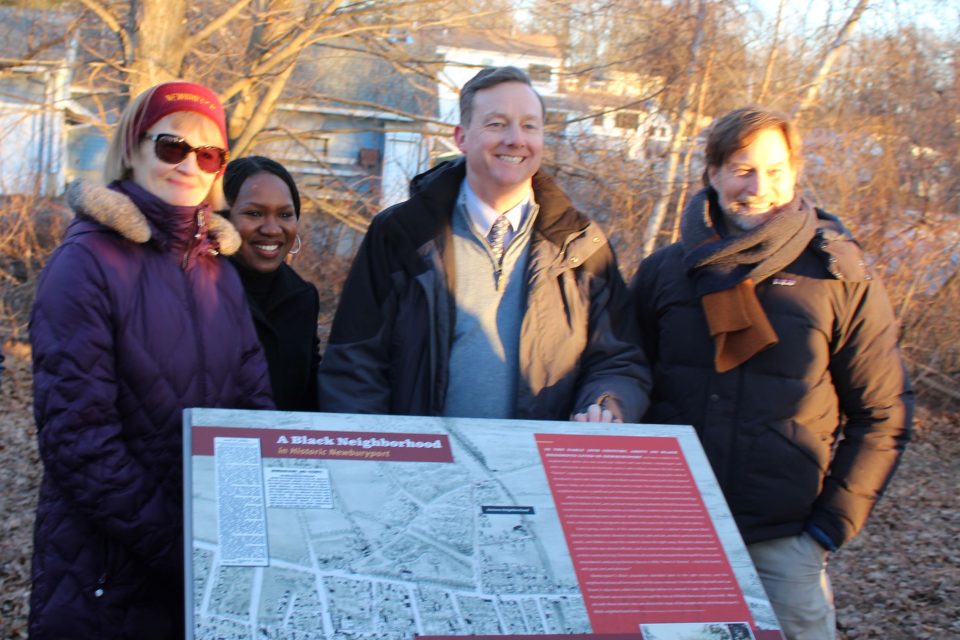NEWBURYPORT — This city is good at preserving and honoring its history, honoring its Coast Guard heritage and preserving its downtown historic buildings, said Northeastern University professor Dr. Kabria Baumgartner last week.
What the city did not preserve and honor were people and buildings associated with its African American residents, said Baumgartner, a founder of the Newburyport Black Initiative (NBI).
Few buildings and sites associated with Newburyport black history have been preserved, she said. “Stories have been erased or misplaced.” The history of the black residents in Newburyport “comes to us in fragments.”
Working with the NBI, the city took a first step to fix that. It cannot replace the black neighborhood known as Guinea Village, near the intersection of Auburn and Low streets.
But it can honor and teach 21st Century Newburyport residents and visitors about the 100 residents who called Guinea Village home in the 19th Century.
The city and the initiative last week officially unveiled an interpretative sign – A Black Neighborhood in Historic Newburyport – funded by the Community Preservation Commission. The sign was erected on the Clipper City Rail Trail last fall near where the Guinea village and the Guinea Bridge over Low Street stood.
“It is long overdue,” said Mayor Sean Reardon, who cut the ribbon held by Baumgartner, fellow NBI founder Cyd Raschke and city senior planner Geordie Vining.
The mayor promised a robust effort by the city to honor its former black residents, including holding lectures, panel discussions and workshops on the city’s black history.
Reardon, speaking to a mostly white crowd of about 40, held a moment of silence in honor of Tyre Nichols, a young black man, who died in Memphis, TN, last month after apparently being beaten by police officers.
“This is yet another blow to the black community,” the mayor said.
Vining said there will be another nine interpretative signs, mostly in the downtown area, which will acknowledge the lives of black residents, including local businesspeople, mariners, soldiers and sailors in wars from the Revolution to Worth War II.
“Black history is American history,” said Kelly Bovio, the district chief of staff for U.S. Rep. Seth Moulton. The interpretative signs, she said, bring “black history to life.”
Raschke said local historian and author Ghlee Woodworth was the first to suggest erecting the interpretative sign. When Raschke and other initiative founders met with Vining, she said she was surprised that he was already researching the city’s black community.
Vining, who led the shivering crowd in jumping jacks to keep their blood flowing, said he has developed a “man crush” on John C. H. Young, a barbershop owner, who died at age 72 in 1889.
The senior planner, who led the city’s construction of the rail trail, said he cannot learn enough about Young, who was a leader of the Guinea neighborhood.
After the ribbon cutting, members of the crowd walked down the rail trail to Auburn Street in the probable footsteps of Guinea residents to where today is the Oak Hill Burying Ground.
There Young’s gravestone reads: “A colored man of many virtues, poor as the poorest. He fed the hungry, clothed the naked, and was a father to the fatherless. Kind and obliging to all.”
Black Neighborhood Honored
Tuesday February 07, 2023

From left, Cyd Raschke, Dr. Kabria Baumgartner, Mayor Sean Reardon and Geordie Vining.



